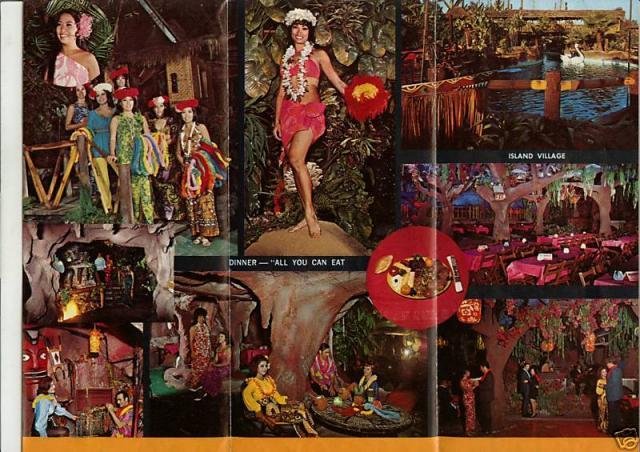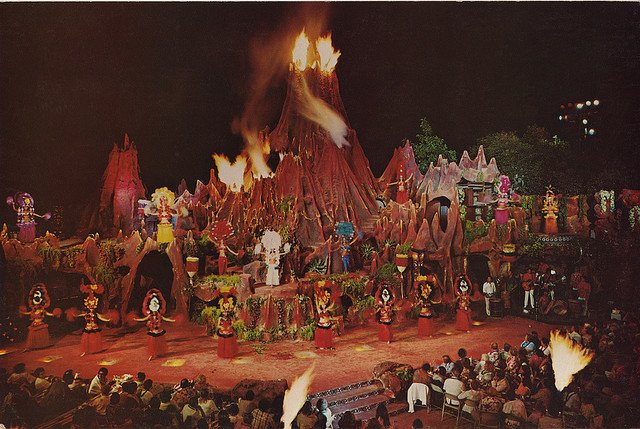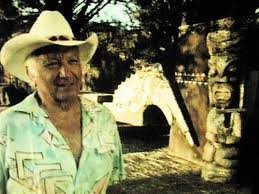Danny Balsz - The P.T. Barnum of Polynesian Pop
Although Danny Balsz was neither a culinary innovator or mixologist, he knew how to put on a show better than anybody else .
And he did it in spades, turning island life into a giant, multi-colored spectacle for his customers.
Balsz grew up in the bordertown of Mexicali, the son of a nightclub owner. After moving to East L.A., he worked as a slaughterhouse butcher for ten years, then became a waterfall landscaper.
In 1958, he married the owner of a chicken ranch in Monterey Park .
Two years later, some college students asked if they could hold a luau on their ranch. With luau parties and Tiki temples all the rage at the time, Balsz and his wife realized what a jackpot they had on their hands, and decided to open their own Tiki temple—but not just any.
With his landscaping skills now sharpened to a T, and a quarter acre at his disposal, Balsz had just the place to hold the ultimate luau. He got to work sculpting waterfalls, lava tunnels, stalactite caves, a stage and a tropical garden.

When he was done, he christened his Polynesian play land The Tikis and opened for business in 1960.
It was truly a sight to behold, a massive entertainment complex with a giant fire-spewing Tiki, volcanoes, and dancers dressed up in elaborate and colorful island costumes—and, of course, lots and lots of tikis.
Seating was available for more than 3,000 customers.
For sheer spectacle, nothing could beat The Tikis.

Unfortunately, Balsz’s neighbors weren’t as thrilled with it as the audience, having to put up with the crowds and noise every week.
Eventually, the city caved in and revoked his entertainment license .
Not one to give up easily, Balsz packed up and moved south of L.A. to Lake Elsinore, where he went to work creating a new Tiki playland.
Unfortunately, by the time he finished in the early 70’s, America’s Polynesia craze had run its course, and The Tikis’s grand re-opening never happened.
The site of Danny Balsz’s aborted venture is now a paint ball course, all the tikis long gone . However, much of the landscaping and rock formations still remain, and stand as a creative monument to the man who gave the world its biggest luau ever.

